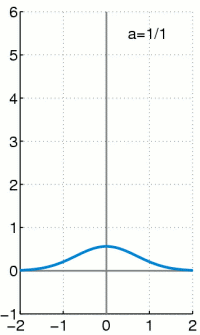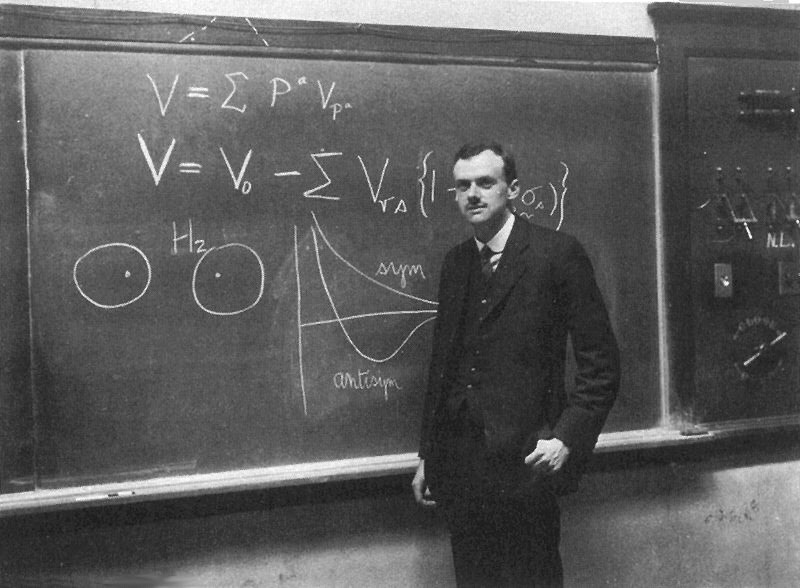Math scares me.
I can handle 2+2=4 well enough, and even some long division without a calculator, but higher math—anything above algebra, really—makes my head hurt.
So I had a conflicted experience last week when I stumbled across something called the Dirac Delta Function. Named after the physicist Paul Dirac, an early pioneer of quantum theory, the function is a math equation that yields zero for every number you plug into it, except when you plug in zero, in which case the answer becomes infinity.
Infinity only occuring at zero… I suddenly sensed I was onto another poetic interconnection. Buddhists consider the true nature of things to be sunyata—emptiness. And Kabbalists describe God as ayin—a ‘nothingness’ (zero) with infinite potential to become anything and everything.
Math suddenly seemed like a fear worth facing…
I called a friend, Dawn Porter, Ph.D., University of Southern California math/statistics professor and co-author of the fabulously exciting text, Basic Econometrics. I asked for tutoring and she generously obliged.
Here’s what I learned:
A math function can be used as a formula for exploring possibilities. Considered this way, functions are best visualized as graphs. The horizontal axis of the graph (the x axis) represents a range of possibilities, and the vertical axis of the graph (the y axis) represents the likelihood of any of those possibilities coming true. Here’s a visual:

The Dirac Delta Function yields a graph in which almost all values of x register a zero value on the y axis, which means there’s no chance of any of those possiblities coming true. The only value of x that gets any action is x=0. At x=0, the y value becomes infinity. So, paradoxically, when x is nothing, when there are no possibilities at all, everything suddenly happens.
The darkest hour is just before the dawn (no pun intended, Dawn).
Here’s a cool animated GIF illustrating the graph:

Now, mystics the world over believe there’s an inverse correlation between ego and God. The more we identify with our self, our ego, the less room we have inside us for God. So the more we empty ourselves of self-oriented wants and motivations, the more space divinity has to move into us and exercise its wants and motivations, which are always loving and groovy.
With that in mind, let’s reconsider the animated graph above. Imagine the horizontal x axis is your ego, your sense of self. Now imagine the verticle y axis is God. The Dirac Delta Function says that when x=0, when you become nothing, the value of God for you becomes infinite! But when you have any other value than zero, whether positive or negative, the possibility of God vanishes. When we’re self-concerned, divinity can’t find good living space inside us.
I’m a born again math convert now, the Dirac Delta Function saved me! How about you?



Cool stuff. But so a Dirac Delta Functionalist would posit that God only happens at self=zero? Hmm. That’s awfully orthodox.
DDFs wouldn’t leave a lot of room for “such fellows as I…crawling between earth and heaven” (meaning everyone but Jesus, Buddha or those who think they are). That’s when scary stuff happens.
I don’t think most people truly want to become nothing in order to experience God. Sounds a lot like death. But that’s where the math would get messy.
How about a reform theorem: Fractional Dirac Delta Functionalism. FDDF. I like the symmetry, and we could enjoy the taste of a nice glass of orange juice or the feel of rough cotton while still making room for God.
Then again, I’m not a math guy either. Would Dirac say that the numbers just don’t add up?
Thank you for your comment! I agree with you: Most people wouldn’t want to become nothing in order to experience God. But mystics commonly equate their spiritual breakthroughs with death—the crucifixion and resurrection of Jesus is interpretable as a death to self, followed by an enlightened rebirth. Any moment where self-consciousness totally dissolves can be analogized with death. The French phrase for orgasm is la petite mort, which translates ‘the little death’. Kind of puts a happier spin on the topic, yeah?
All that said, I like your reform theorem. And I like orange juice. And Islamic mystics are thought to have been named Sufis after the Arabic word for wool. Apparently, the spiritual aspirants wore distinctive low-tech robes. So there’s a vague poetic interconnection with the rough cotton you mentioned…
I love this article. I’ve kept the animated graph open in a web browser for a few days now. It doesn’t entirely make sense to me, which is perfect. Thanks for sharing.
You’re very welcome, Sarah. I’m so glad my blog post beguiled you… I just surfed your site and enjoyed your post on Sufism. Hafiz is one of my favorite poets. Would you be interested in a link exchange? Grow the circle?
I’d be happy to add a link to your site! In fact, I created a blogroll just for that purpose. You’re linked!
Just linked to you also! Meant to ask before: how did you find “God is a Dirac Delta Function”?! An obscure post, though one of my favorites.
Honestly, I don’t remember how I found that article. I google strange things and get intereting results, but perhaps it was linked to from another site? Sorry, I can’t recall.
Well, I’m just glad you found it! Looking forward to being in touch.